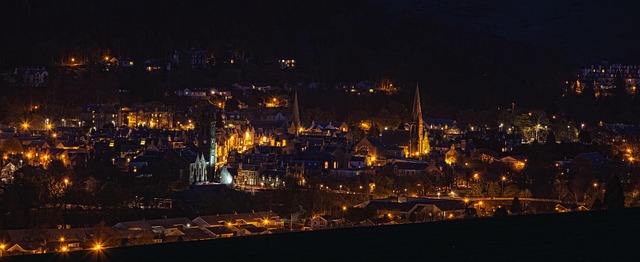Unlocking the Power of Dynamic Range: A Photographer’s Guide to Layered Optics
As photographers, we often search for ways to elevate our images beyond mere documentation, striving instead to capture the emotion and beauty of a moment. At the heart of this pursuit lies the concept of dynamic range, a vital element that defines how we perceive light and shadow in our photographs. Understanding and harnessing dynamic range can transform ordinary images into breathtaking masterpieces.
Dynamic range refers to the difference between the darkest and brightest parts of an image. A camera’s capability to capture details in both areas is crucial for achieving a balanced, vibrant photo. When we explore layered optics, we delve into a world that allows us to truly unlock this potential. By stacking filters or using advanced lenses, photographers can manipulate light and improve the depth of field, all while enhancing the overall luminosity of their shots.
The Role of Optics in Dynamic Range
The choice of optics plays a critical role in a camera’s ability to capture a wide dynamic range. High-quality lenses are designed to minimize distortions and maintain sharpness across the spectrum of light. When we opt for lenses with larger apertures, we gain greater control over exposure, allowing for more expressive captures in both the highlights and shadows.
Consider incorporating polarizing filters into your photography toolkit. These can help manage glare and reflections, enabling more dramatic sky contrasts and richer colors. By reducing unwanted reflections, you can extend the effective dynamic range of your photo, bringing out details that might otherwise be lost in bright sunlight.
Layering Techniques for Enhanced Depth
Layering is not just a technique limited to post-processing; it can also be applied in the field. Think about the elements within your composition as layers themselves. By capturing distinct layers of foreground, midground, and background, you create a sense of depth and dimensionality. This can add richness to your images and allows the variations in light to play harmoniously across the layers.
Moreover, experimenting with bracketing exposures is an excellent way to capture a wider dynamic range. By taking multiple shots at varying exposures, you can later blend them in post-processing for an image that accurately represents the wide spectrum of light present in your scene. This method can reveal hidden details in shadows and preserve the brilliance of highlights, enhancing the overall narrative of your photograph.
Embracing the Characteristics of Light
Understanding the characteristics of light is essential for any photographer dedicated to exploring dynamic range. Golden hour—the time around sunrise and sunset—provides a soft, warm light ideal for capturing expansive dynamic ranges. Utilize this natural light to photograph landscapes, portraits, or urban scenes, allowing the gentle transitions from light to shadow to breathe life into your work.
Incorporating a variety of shooting conditions, from bright afternoons to moody overcast days, can add versatility to your portfolio. Each situation presents a unique set of challenges and opportunities in relation to dynamic range, and by embracing each one, you foster a deeper connection with the optics and tools at your disposal.
Ultimately, mastering dynamic range and layered optics is about more than just technical prowess; it’s about telling a story and inviting viewers to immerse themselves in the feelings and emotions captured within the frame. By understanding the interplay of light and shadow, alongside the profound implications of layering, you can enhance your visual storytelling, helping your photography resonate on a deeper level.



